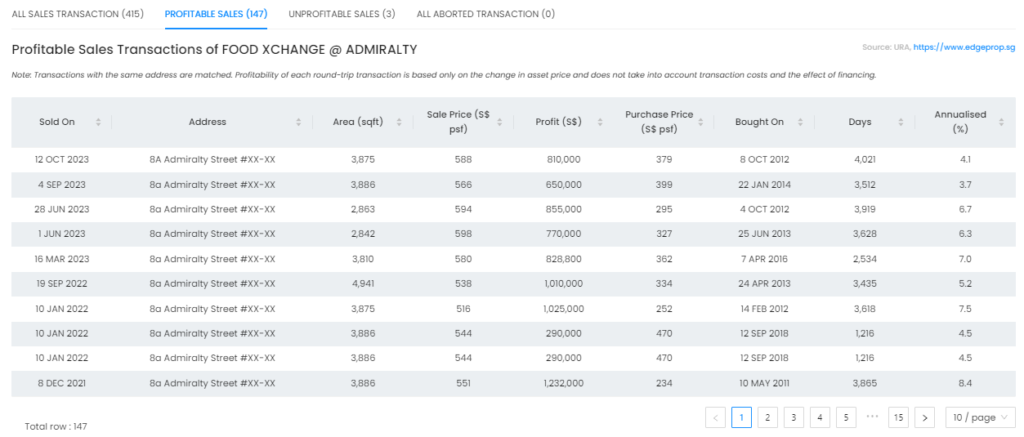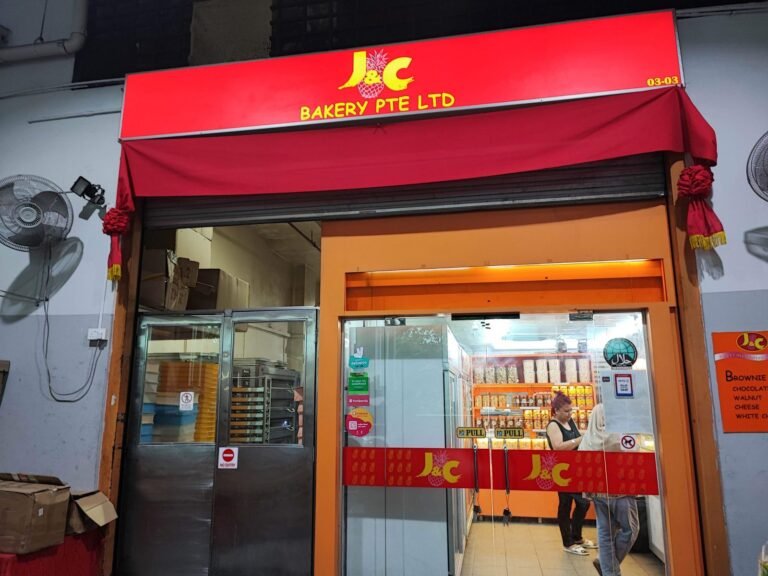Food Factory – Are they worth buying for investment?

I am going to talk about food factories. I know this is another boring topic that many of you will not be keen on. Most of you are curious about HDB, new launches, resale condos, landed properties, and so on. When I talk about non-residential properties. I know many will of you will fall asleep or skip this video altogether.
For those who have been following my channel long enough. You will know that I create content for knowledge and not so much on sales related. After all, I believe in empowering consumers to make better investment decisions.
Nevertheless, this is a subject that I am pretty curious on. I often ask myself what are food factories? Where are they located? And most importantly, are they worth buying for investment? Can they make money or not?
Without further ado. Let’s jump straight into food factory.
What is a food factory?
I believe most of us would have dined in a restaurant or takeaway food from food kiosk. Have you noticed that most of the food is consistent in taste across the outlets that you patronize? Well, this is because most of our food today is manufactured in factories. The chef only needs to make it hot, do some light seasoning, and serve the food on your plate. Most of the heavy lifting is done in the factories.
Why is this so you may ask? There are a few reasons that I can think of. Firstly, this allows the food that is served to us to be consistent across the outlets. Secondly, this helps to reduce manpower and labour costs, as machinery is more cost-efficient to produce food in large quantities. Thirdly, retail space is expensive in Singapore. Most restaurants would prefer to set aside more space for dining than to build a huge kitchen.
A food factory is pretty similar to any industrial factory space. Except that there are provisions for higher electrical loading for the cooking equipment and cold rooms. There will be bigger waste disposal facilities for the food waste. There is also provision for gas, exhaust shaft, and grease trap. There are also loading and unloading facilities to ease the movement of goods.

So where are the food factories located?
As you know. Factories are used for general industries are usually zoned as either B1 or B2 industrial. However, most food factories that are used for food production are usually zoned B2 industrial as stated in the URA Master Plan. This is because a food factory produces waste discharge, noise, and smell and therefore are classified as heavy industrial trades. They are usually located on a list of areas or buildings approved for food use as stated by the Singapore Food Agency or SFA. They are located mainly in the North, East, and West parts of Singapore.
They can be located in flatted factories such as those found in Woodlands Loop, Senoko to Admiralty.
There are also others in the East such as Gourmet East Kitchen, KA Foodlink to standalone buildings. Most of the food factories are owned and managed by JTC or Reits. Only a small proportion are owned by a single landlord who owns the entire building or by private individuals who own those strata-titled factory spaces. In today’s discussion, I will only be focusing on strata-titled factory space.

Strata titled factory space
In this segment, I have gone through the data for more than a dozen strata titled factories. However, it seems that resale transactions are pretty low, especially for those that are newly completed ones. Here, I will come back to them later.
For our discussion, let us go to the North in particular. There is only 1 strata titled food factory that has more data for our comparison. This factory is known as Food Xchange @ Admiralty. It is sitting on a land area of 301,416 sqf. This means this is a mid-size food factory. It is on 60 years lease from 2000 and TOP in 2009. To date, there have been a healthy number of resale transactions over the past decade. A typical unit measuring 2,800 sqf will cost you $1.7million. Whereas, those slighter bigger at 3,900sqf will fetch $2.2million upwards. In terms of psf, they are trending close to $600psf.

Let us take a look at the profitable and unprofitable transactions. So far, there are 147 profitable transactions with the last 10 transactions averaging a $780,000 in profit. This works out to a 5.8% annualized return. Personally, I think this is pretty awesome return for a food factory. On the other hand, there are 3 unprofitable transactions. This is not very significant in my opinion.
Here, why is Food Xchange @ Admiralty doing so well? I can only conclude that the food factory was a pretty new concept back a decade ago. Moreover, it is situated in the Admiralty industrial cluster which is highly inaccessible and undeveloped back then. This means the initial selling price was kept low.
For those who don’t know this place. It is near the popular Sembawang God of Wealth Temple or 三巴旺财神庙. I have left the links on the temple and location map in the description below.
This rise in central kitchens and cloud kitchens has also accelerated the demand for such spaces. Moreover, Food Xchange is on a 60-year tenure and with a remaining lease of 36 years. This means end users and investors have room to exit in the future. The overall quantum below $2 million is also digestible to most buyers.


However, that can’t be said for other food factories that are in the range of $3 million and above. This is especially so for those newly built private-owned freehold ones. At such prices. It is mainly suitable for end users to own their own factory and operate the space for themselves. I realize that most of them are sitting on small floor plans that are not too efficient for a factory to operate. They also do not have provision for a 20-foot container to ramp up directly to the units. Some of these factories that are built in the older regime have air space counted into their strata area. This means the usable space is actually smaller. These are some of the reasons why there are a lack of resale transactions in the market.
On the other hand, let me share with you KA Foodlink that I have visited. This factory space is owned and managed by Mapletree Industrial Reits. Let me bring you around the factory. As you enter the carpark. There is ample parking space for both tenants and visitors. As I walk toward the lift lobby. There is a huge tenant directory and I assume there is high occupancy rates. The factory is 6 storeys high with rows of food production units lining up along the long corridors. There is also provision for cargo lifts on both ends and the loading bays are located on the ground floor. As I leave the premises. I can feel the spaciousness and practical use of space. That is why such factory spaces are sourced after by companies to house their production facilities even on lease.

For your info. Do you know I love to visit factories? Not because of this YouTube video. But rather. That is a lot of lobang in the industrial estates if you know where to find them. Especially come Chinese New Year’s. There will be a lot of warehouse sales located from Boon Lay to Pandan Loop to Woodlands. One such example is this J&C Bakery along Woodlands Loop that I always patronize. They sell halal cakes and parties. It is ideal for gatherings and parties. You can check out their opening hours and directions in the description below.

Anyway, some of you may ask me. How come there is a retail shop in an industrial estate? Well, this is considered as a showroom. URA allows showrooms in industrial premises provided it fulfills certain conditions. And most importantly, SLA may assess such showrooms based on Group A Commercial rate for the purpose of computing Land Betterment Charge. In layman’s terms, if you want to convert part of your production space into a showroom, you need to pay taxes.
So next time if you see such a space. Don’t assume it is illegal. Most likely they have applied to the authorities for change of uses. Some may argue why must apply change of use and pay taxes. Well, this is Singapore. And if everyone suka suka change of use. Then my downstair mama shop can start to convert into a pub and start charging double for a glass of beer!

Here, who will benefit? Obviously, it is to the retailer’s advantage and not the consumer’s. That is why the authority needs to tax them to cream off part of their extra profit for nation-building. Here, where to find money to pay for Workfare, Merdeka package, subsidy MOE school fees to clean public parks that we all enjoyed? Think about it. if I make sense to you.
Here, I have come to the end of this video. If you happen to own any factory space and have plans to sell or rent out. I will be more than happy to assist you. After all, I also transacted factories before. Don’t worry.
That all. Hope you enjoy this blog. See you soon.


